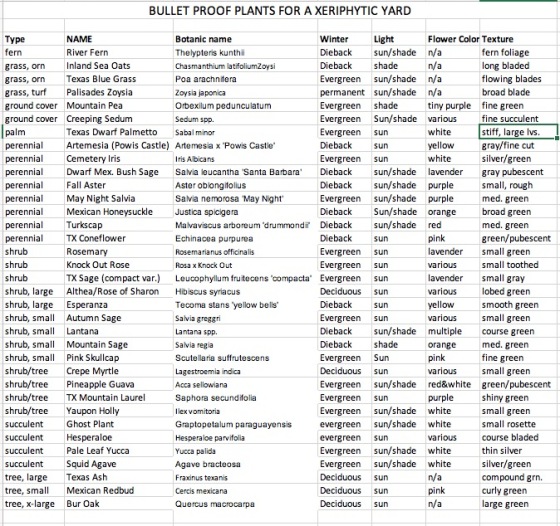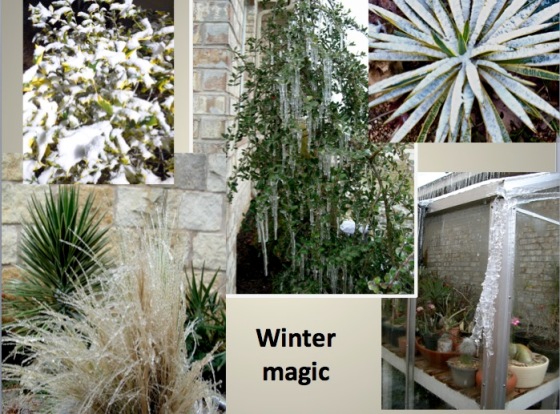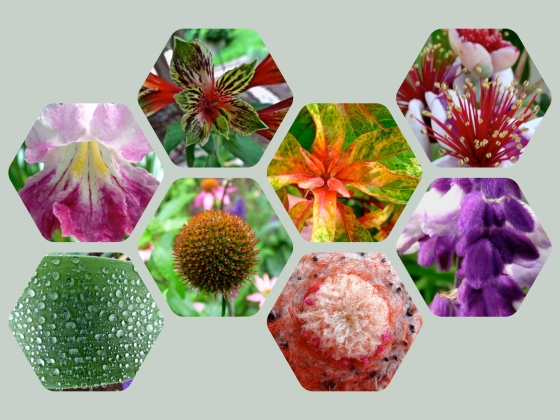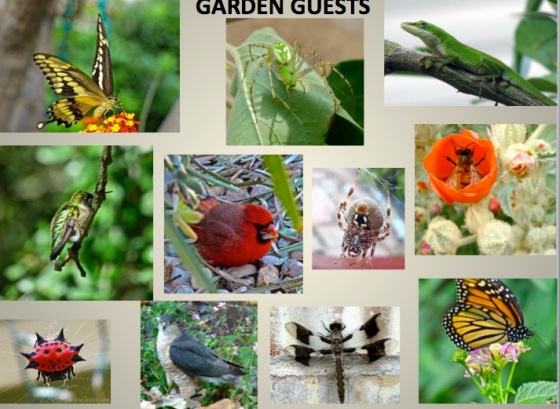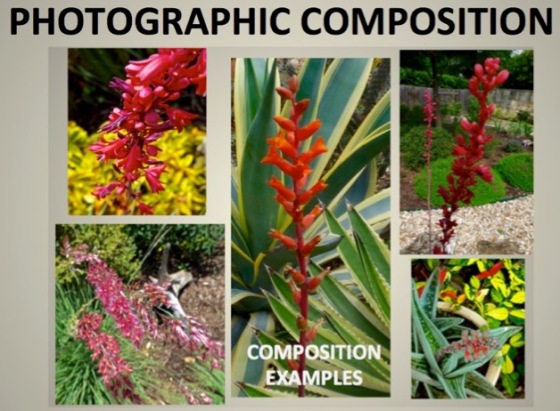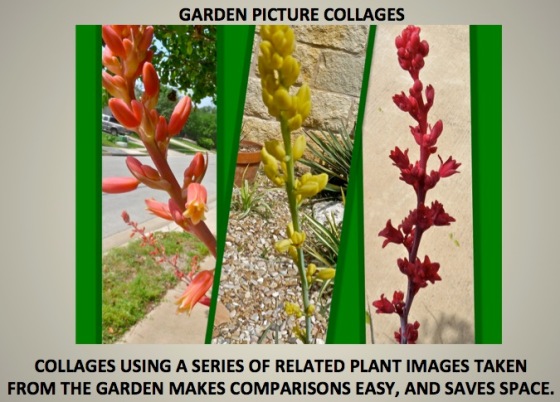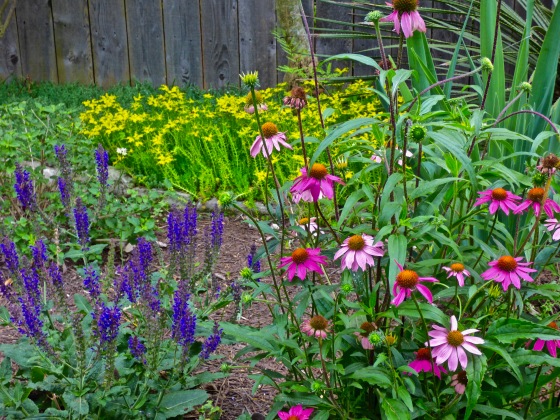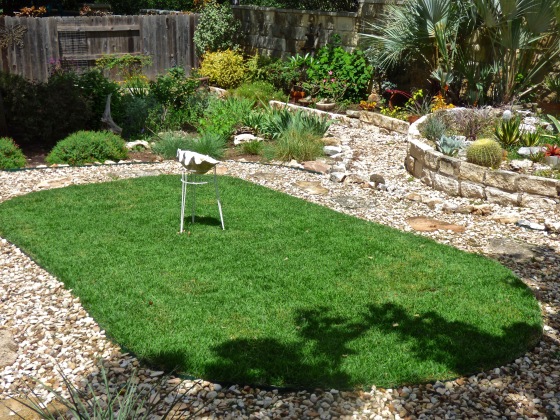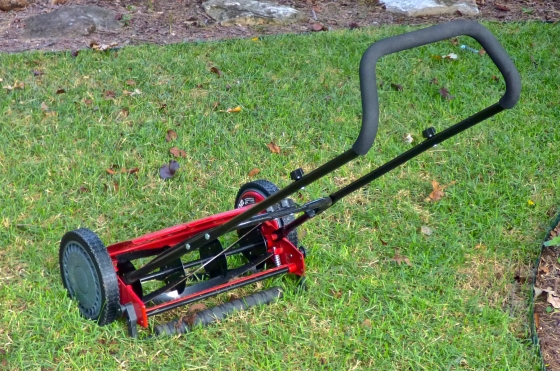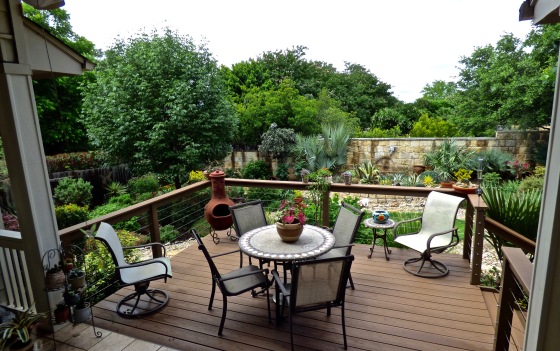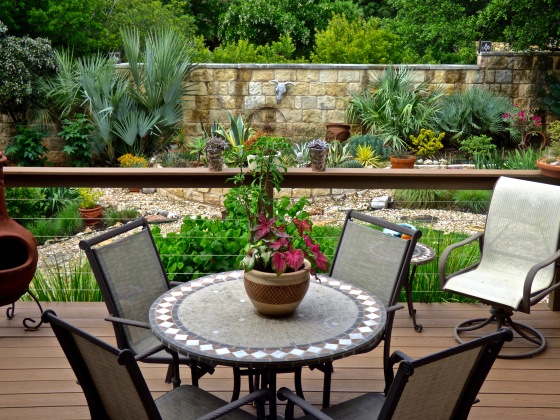WHY Xeriscape? We are running out of clean water and future predictions are for sustained drought for the next decade for central Texas. Austin area population is growing at a rate of 150 new permanent households every day which translates to over 2 million people by 2016 and doubling to 4 million by 2040. Due to periodic drought periods, our lakes that provide our water cannot be sustained at a uniform full level. Our aquifers are slowly diminishing yet demand for water will increase with population growth. That just doesn’t compute. This is a long-term crisis that must be addressed NOW! The crisis isn’t going away the next time we get a deluge of rain. Residential water use for landscaping is 30% or more of total water use. This is one area of water conservation that can have a significant impact on addressing this crisis. It isn’t hard to do. We must rethink what is an acceptable landscaping for our neighborhoods and change the “green lawn” paradigm.
Advantages of Water-wise landscaping:
Significant impact in conserving critically diminishing water supplies
Saves homeowners money, not only for water usage.
Reduces runoff of pollution into groundwater supplies by chemical lawn products
Reduces yard maintenance (mowing during heat of summer)
Provides durable and lasting landscape by using native and adaptive plants
Protects our fragile environment
Inspires artistry, creativity and variety in landscape design
Helps wildlife by providing natural food and shelter
Three basic principles of xeriscaping:1. Reduce lawn size, 2. Use native and adaptive plants, and 3. Embrace the local environment – don’t try to change it.
Most people want to do the right thing but don’t know how to go about it. Some tips:
Plan, plan, plan, first. Wear down a lot of pencil leads and erasers. Put it on paper, use available and reliable sources of information, e.g. City of Austin Grow Green Book, and run a sanity check on your design before any digging. If work is to be done by a professional landscaper, supervise and challenge if necessary, what they do or produce.
- Check HOA guidelines and submit xeriscape plan for approval if required.
- Stick to your plan and modify only as needed as you progress.
- Removal of existing lawn can be done with a weed eater to avoid disturbance of soil ecology or damage to tree roots.You can even use shredded grass for compost pile.
- Lay out borders between materials and textures using metal stripping. Complete all hardscaping, masonry, and construction work first.
- Plan a phased work schedule to coordinate delivery of materials and work days.Three inches of native TX hardwood mulch for mulched areas, and 2” of 5/8” river rock for stone walkways, which may include stepping stones, is recommended.
- Choosing, buying and planting plants is the last step, after all hardscaping and layouts are done. It is best to do construction work in fall and winter and plant in spring.
- Place plants in-situ and hand water well until established. Allow spacing based on ultimate plant size, not instant appearance.
- Palisades Zoysia has been proven to be an excellent choice for both sun and shade and uses less water than other alternatives if small areas of turf are needed.
- Remember, xeriscapes reduce maintenance work, but are not maintenance free.
October thru March is the ideal time to change your yard to a water-wise, sustainable landscape. It’s an investment that will reap benefits to you and your community..


